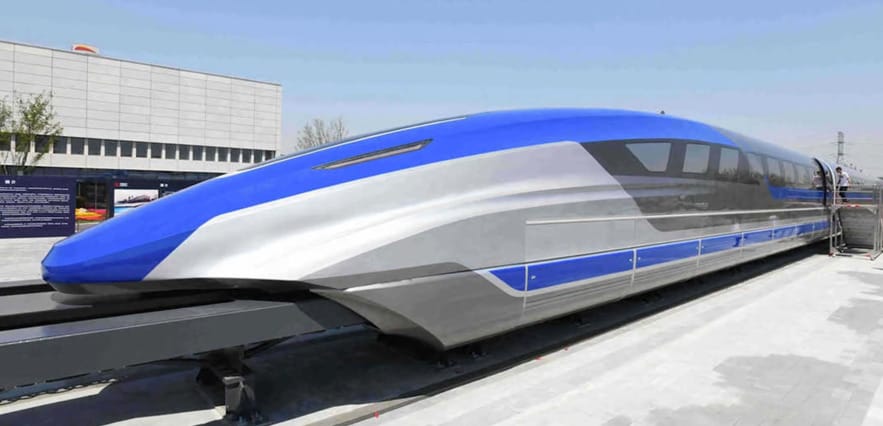What Are Superconductors

In everyday life, we often use conductors, insulators, and even semiconductors. So what are these superconductors? Usually, almost all of the superconductors we use are some kind of metal. This metal has free electrons. These free electrons can move through this metal. Then an electric current is generated there, but the free electrons in this metal cannot move 100 percent freely through this metal. Why do the atoms in this metal have nuclei, which hinders these electrons? That's what we call resistance.
Normally, the electrical conductors we use have very low resistance. That's why we can use them as conductors. The resistance of semiconductors is very high, and that's why it's a semiconductor, so every electrical conductor we use has a little bit of resistance. So we give the electrons a little push to move through this conductor, and this push is what we call the potential difference or voltage.
In the conductors we usually use, that is, conductors with very low electrical resistance, when a small push is given, a large number of electrons can pass through them. That means a large current can pass through a small potential difference. Also, if there is a material with high electrical resistance, we have to give a very large push to make electrons move through it, which means we have to give a very large voltage.
We usually think of our atmosphere as a conductor. There is a very high resistance to electrons moving through our atmosphere. But if we use a Tesla coil and create a very high voltage, that is, if we give these electrons a very large push, these electrons will be able to travel even through the atmosphere, which has become a conductor. That means we can make an electric current pass through this atmosphere.
After listening to these details, you probably understand that if we give a large potential difference to a conductor, if we give a very large voltage, a large current will flow through that conductor. If the voltage is reduced, the current also decreases.
Similarly, if a conductor has low electrical resistance, it can carry more current at a lower voltage. Also, if there is an element with high electrical resistance, we have to provide a high voltage to maintain the current in it.
When a current flows in a conductor, the relationship between that current, the voltage, and the electrical resistance of the conductor was first discovered by a German physicist, Georg Ohm. We call this Ohm's Law.


Ohm's Law states that the current flowing in any conductor is proportional to the potential difference across that conductor. Similarly, if we consider the resistance of this conductor as a constant, then we can derive the equation V=IR from Ohm's Law.
For example, imagine that there is a conductor with an electrical resistance of 1 ohm. If we apply a potential difference of 10 volts to this conductor, then according to the equation V=IR, a current of 10 amperes will flow through this conductor.
However, imagine that there is a conductor with an electrical resistance of 10 ohms. If we apply a potential difference of 10 volts to it, according to the equation V=IR, the current flowing through it will be 1 ampere.
So, using this equation, you can now imagine what kind of current would flow in such a conductor, with zero electrical resistance, if it existed anywhere in the world.
You can use V=IR and replace R with 0 and see what the answer is from this equation by putting in different voltages. So, after doing the calculations in this way, you will understand that a conductor with an electrical resistance of 0 ohms can carry an infinite current, whether or not a potential difference is applied to it, and we call such a conductor a superconductor.
After hearing all these details, you might start thinking that there can't be a conductor with zero resistance that can allow current to flow without any potential difference. But scientists have been able to find superconductors in this way.
The first superconductor discovered by scientists was mercury, and many people call it The Original Super Conductor. It is also why scientists were able to discover that several metals in our periodic table exhibit such superconducting properties, and to prove it through practical experiments.
When a current flows through a superconductor like this, that is, when free electrons move, there is no electrical resistance, so no heat is generated there, and therefore no energy loss occurs.
After hearing this information, you start thinking, can we use superconductors like this to bring the electricity produced in power plants to our homes? Then, without any energy loss, can we bring the electricity produced in the power plant to our homes?
However, all of the superconductors that scientists have discovered so far exhibit these superconducting properties at very low temperatures or very high pressures. So, because of this fact, even though there is no energy loss when current flows through a superconductor like this, we have to use additional energy to maintain the superconducting properties of these superconductors.
We cannot use these superconductors for every day use. But in special cases, these superconductors have been used practically. You all know that the MRI scanners in hospitals work with a very strong electromagnetic field. Superconductors are used inside the MRI scanner to create this electromagnetic field.

Since superconductors are used inside an MRI scanner like this, there is also a special cooling system inside to maintain the temperature of that superconductor at a very low level.
Similarly, we all know that the world's largest particle accelerator, the Large Hadron Collider, also uses such superconductors because it needs to create a very strong magnetic field there.

If you bring a magnet close to a superconductor like this, you will be able to observe a repulsion there. The reason for this repulsion is that this magnetic field cannot pass through this superconductor.
If you put a magnet on top of a superconductor like this, that magnet will be able to float on top of this superconductor forever. We call this the Meissner effect.
After hearing this information, you might wonder if we could use this technique to create a Maglev Train. But this superconductor requires a very low temperature to maintain its superconducting properties, so this is still not a practical method.

All the computers we use work with logic gates. These logic gates are made of transistors, and transistors are made of semiconductors. But now, scientists have been able to use these superconductors to create very fast logic gates. If we were to build a processor using such logic gates, we could increase the processing power of that processor beyond what we can imagine.
Scientists in Japan were able to create a 4-bit processor using superconductors. We usually use 64-bit processors made from semiconductors. Surprisingly these 4-bit processors made from superconductors were able to perform about 500 times faster than 64-bit processors made from semiconductors.
After hearing all these details, you probably understand how important these superconductors are. But until now, we have not been able to use these superconductors in practice.
Like all superconductors, they exhibit superconducting properties at very low temperatures, and a very large amount of energy is required to maintain that temperature.
As discussed earlier, the first superconductor discovered by scientists was mercury, and this mercury can only exhibit superconducting properties at -269 °C. But later, scientists were able to create metals that exhibited superconducting properties at -73 °C, but this is also a very low temperature.
Similarly, another team of scientists was able to create a metal that exhibits superconducting properties at -23 °C, but in addition to this low temperature, high pressure is also required to maintain the superconducting properties of this metal.
So, scientists are still trying to create a metal that exhibits superconducting properties at room temperature. If we can create such a metal, we will be able to make a breakthrough in ways we can't even imagine.